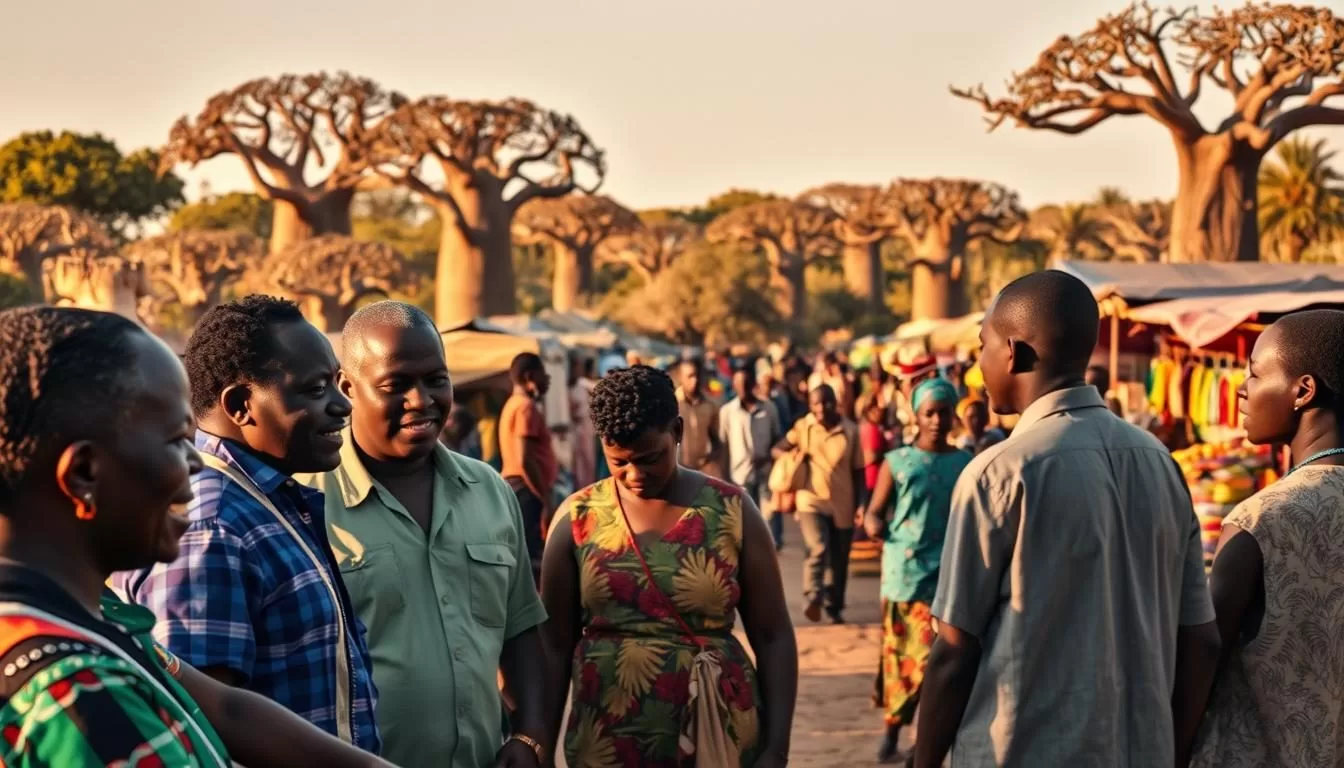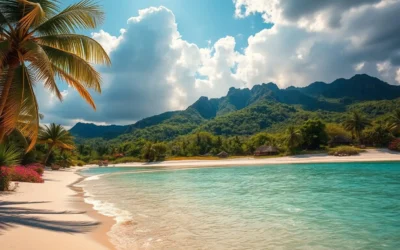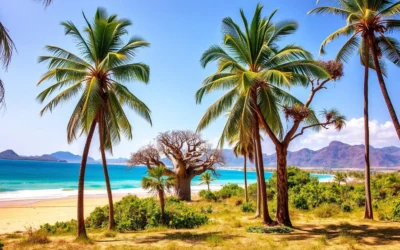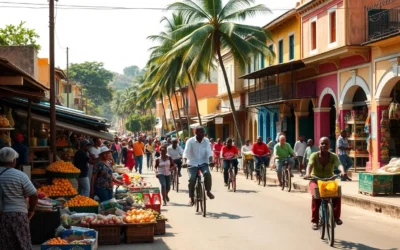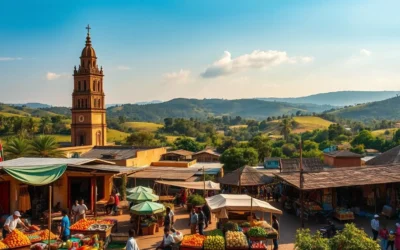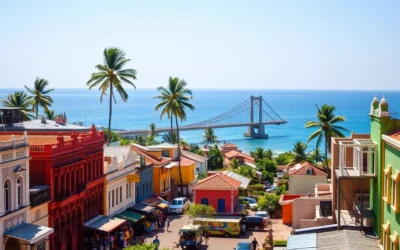✓ Accommodations ✓ Flights ✓ Rental Cars ✓ Tours & Activities
When you think about Mozambique, its rich linguistic diversity might not be the first thing that comes to mind. However, this country is a fascinating blend of cultures and languages. Portuguese is the official language, a legacy of its colonial past, and it plays a significant role in daily life and education.
In urban areas, over 80% of the population aged 5 and older are fluent in Portuguese, while in rural areas, this number drops to about 36%. This contrast highlights the diverse ways language is used across different regions. Beyond Portuguese, there are over 40 indigenous languages spoken, reflecting the country’s cultural richness.
Understanding these languages is key to appreciating Mozambique’s identity. Whether you’re planning a visit or simply curious, exploring its linguistic landscape offers a deeper connection to its people and history.
An Overview of Mozambique’s Linguistic Landscape
From ancient trade routes to modern cities, language shapes the identity of this land. The way people communicate here reveals layers of history and tradition. Over time, indigenous, Arab, and colonial influences have intermingled, creating a rich linguistic tapestry.
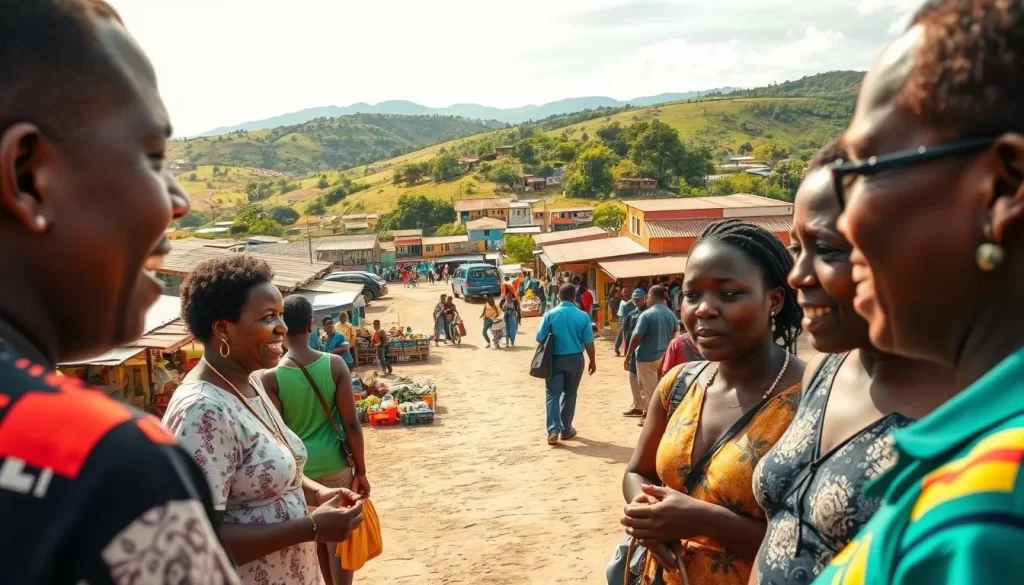
Historical Context of Language Diversity
Centuries ago, trade routes brought Arab merchants to this region, introducing new words and ideas. Later, colonial powers left their mark, with the Portuguese language becoming a dominant force. Indigenous Bantu languages, however, remained the heart of local communities, preserving cultural heritage.
Today, over 40 local languages are spoken, reflecting the country’s cultural richness. Emakhuwa, for example, is used by 26% of the population, making it the most widely spoken indigenous language. These languages continue to thrive, especially in rural areas where traditions are deeply rooted.
Modern Multilingual Trends
In urban centers, the Portuguese language dominates daily life and education. Over 50% of the population speaks it as a first or second language. However, the use of indigenous languages has declined by 13.6% over the past three decades.
Despite this, there’s a growing movement to preserve and celebrate local languages. From hip-hop culture to literature, these languages are becoming symbols of identity and pride. This shift highlights the evolving role of language in shaping the future of this vibrant community.
Understanding the Role of Portuguese in Mozambique
Portuguese plays a central role in shaping the cultural and social fabric of this vibrant African nation. Its influence extends from education to governance, making it a key part of daily life. Let’s explore how this language became so significant and how it varies across different regions.
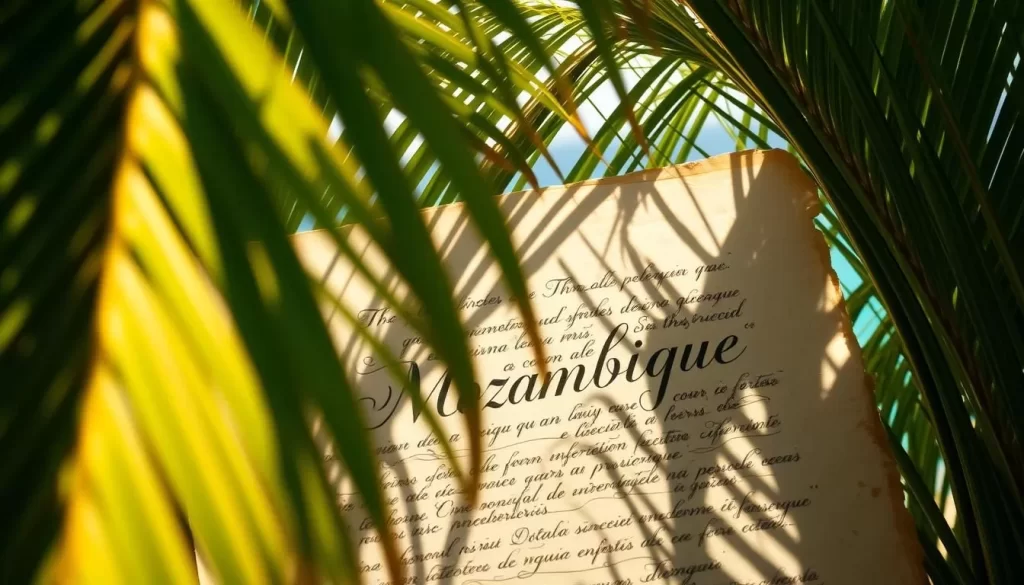
Portuguese Colonial Heritage and Its Legacy
The roots of Portuguese in this country trace back to the colonial period. During this time, it was introduced as the language of administration and education. Over the years, it became deeply embedded in the societal structure, eventually gaining official status.
Today, about 50% of the population speaks Portuguese as a first or second language. This widespread usage highlights its enduring legacy. In urban areas, fluency rates soar to 80.8%, while rural regions see a lower 36.3%. This disparity reflects the ongoing impact of historical processes.
Urban Versus Rural Language Usage
In cities, Portuguese dominates daily interactions, education, and media. It’s a marker of social development and modern identity. For example, in Maputo, 50% of the population speaks it as a native language.
In contrast, rural areas rely more on indigenous languages. Here, traditions remain strong, and Portuguese is often a second language. This divide underscores the complex relationship between language and regional identity.
Despite these differences, Portuguese continues to unite the country. It serves as a bridge between diverse groups, fostering communication and national cohesion.
Mozambique: Official and widely spoken languages
Language plays a pivotal role in shaping the identity of a nation. In this country, the official language is Portuguese, a legacy of its colonial past. This status is enshrined in the constitution, making it the primary medium for governance, education, and media.
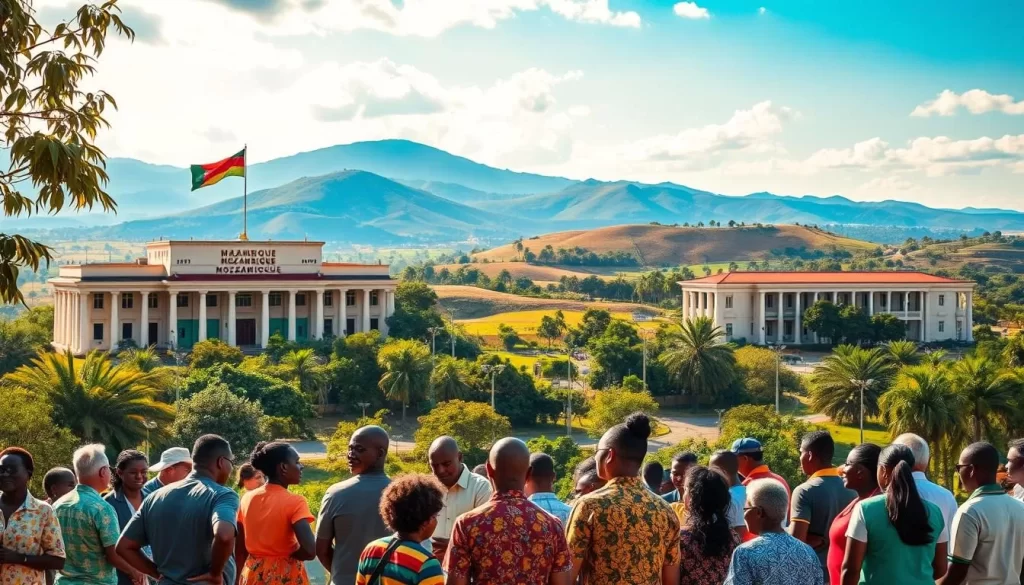
Defining the Official Language Status
An official language is one recognized by a government for use in public communication and administration. In this case, Portuguese serves as a unifying force across diverse communities. It is also the primary language of instruction in schools, ensuring its continued development.
This status influences cultural identity and policy. For example, media outlets and government documents are predominantly in Portuguese. This ensures clear communication across the country, bridging gaps between urban and rural areas.
Insights from Census Data and Population Trends
Census data reveals fascinating trends about language usage. In 2007, 50.4% of the population aged 5 and older were fluent in Portuguese. By 2017, this number slightly decreased to 47.4%, reflecting shifts in linguistic preferences.
Urban areas show higher fluency rates, with 80.8% of residents speaking Portuguese. In contrast, rural regions report only 36.3% fluency. This disparity highlights the influence of development on language adoption.
| Region | Portuguese Fluency (2007) | Portuguese Fluency (2017) |
|---|---|---|
| Urban | 80.8% | 78.5% |
| Rural | 36.3% | 34.2% |
These numbers show how population trends shape language usage. Urbanization and education drive Portuguese adoption, while rural areas preserve indigenous languages. This balance reflects the country’s rich cultural diversity.
Understanding these patterns helps you appreciate the role of language in this vibrant community. Whether in cities or villages, language remains a cornerstone of identity and connection.
Exploring Key Indigenous Languages
The linguistic tapestry of this nation is woven with threads of history, culture, and tradition. Beyond the official language, a vibrant array of indigenous languages thrives, each telling its own story. These languages are not just tools for communication but also carriers of identity and heritage.
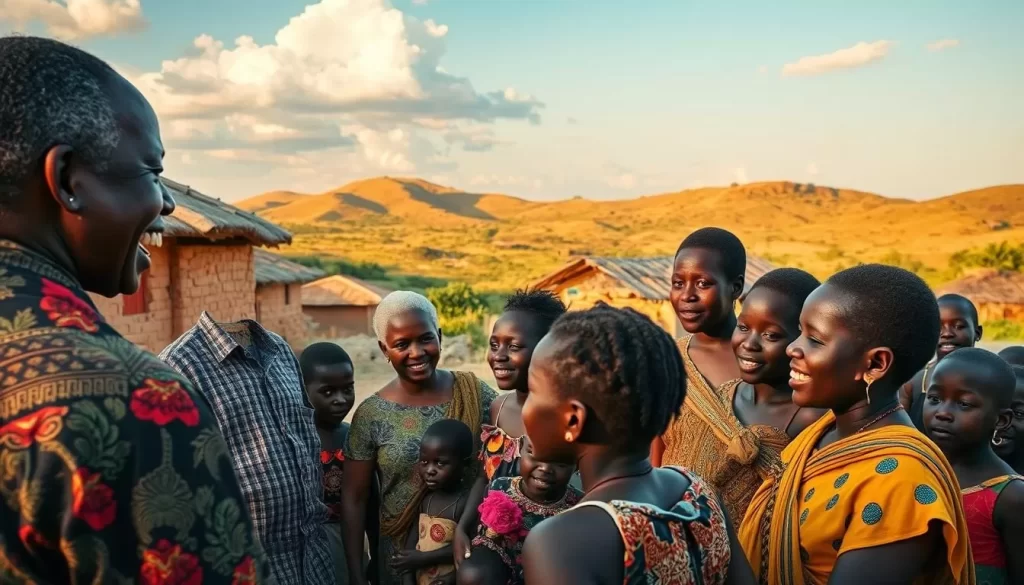
Emakhuwa: The Voice of Northern Mozambique
Emakhuwa is the most widely spoken indigenous language, used by about 25% of the population. Predominantly found in the northern regions, it serves as a cultural cornerstone for millions. With approximately 4 million speakers, Emakhuwa is deeply rooted in family traditions and local folklore.
This Bantu language is known for its tonal nature, adding a musical quality to everyday conversations. It’s a testament to the resilience of cultural identity in the face of modernization. Communities in the north continue to pass it down through generations, ensuring its survival.
Xichangana and Cisena: Regional Variations
Xichangana, spoken by about 11% of the population, is another significant indigenous language. It’s primarily used in the southern regions and is known for its rich oral traditions. Approximately 1.8 million people speak Xichangana, making it a vital part of the cultural fabric.
Cisena, on the other hand, is spoken by around 8% of the population, with about 1.8 million speakers. Found in central regions, it’s celebrated for its unique linguistic features and role in community bonding. Both languages highlight the regional diversity that defines this nation.
These indigenous languages are more than just words; they are bridges to the past and keys to understanding the present. Efforts to preserve them are crucial, as they face challenges from globalization and the dominance of the official language. Learn more about how native and official languages coexist in different regions here.
Impacts on Culture and Education
Language shapes the way communities connect, learn, and grow. In this country, efforts to preserve native tongues highlight the deep connection between cultural heritage and education. These initiatives ensure that traditions are passed down while fostering development.
Language Preservation Initiatives
Preserving linguistic diversity is critical to maintaining cultural richness. Programs like the Planet Aid Food for Knowledge initiative have shown remarkable success. By teaching children in their mother tongues, reading skills improved by nearly 250%.
Over 250,000 bilingual books and materials were distributed, supporting local languages like Changana and Rhonga. These efforts are now being replicated nationwide, ensuring broader impact. Such programs not only enhance literacy but also strengthen cultural identity.
Role of Indigenous Languages in Shaping Identity
Indigenous languages are more than communication tools—they are symbols of identity. For example, Emakhuwa, spoken by 25% of the population, remains a cornerstone of northern communities. Its continued use reflects a commitment to preserving heritage.
In schools, bilingual education bridges the gap between tradition and modernity. Students who learn in their native language perform better academically, proving the value of these programs. This approach fosters pride in cultural roots while preparing youth for a globalized world.
Understanding the role of language in education helps you appreciate its power. From classrooms to communities, these efforts ensure that cultural diversity thrives for generations to come. Learn more about how bilingual education is transforming learning outcomes here.
Regional Linguistic Geography and Variations
Every region has its own linguistic fingerprint, shaped by history and geography. The way people communicate varies significantly across the country, reflecting local traditions and influences. Understanding these differences helps you appreciate the cultural richness of each area.
Mapping the Diversity Across Regions
In the northern regions, Emakhuwa dominates, spoken by about 25% of the population. This Bantu language is deeply rooted in local culture, with over 4 million speakers. Central areas, however, are home to Cisena, used by around 8% of the population.
Southern regions see a strong presence of Xichangana, spoken by approximately 11% of the population. These regional variations highlight how geography influences language distribution. Urban centers, like Maputo, often have higher Portuguese fluency, while rural areas preserve indigenous tongues.
Geographical factors, such as trade routes and migration, have shaped these linguistic patterns over time. For example, coastal regions show influences from Arabic and Swahili, while inland areas retain traditional indigenous languages.
Sign language also plays a role, particularly in urban hubs like Nampula and Beira. It serves as a vital communication tool for the deaf community, bridging gaps in accessibility. Minority language groups, though smaller, contribute to the overall linguistic diversity of the country.
Mapping data reveals fascinating trends. Over the past decade, Portuguese usage has grown in urban areas, while rural regions continue to prioritize local languages. This balance between tradition and modernity defines the linguistic landscape of the region.
To explore more about how Portuguese coexists with native languages, check out this detailed overview. For insights into Africa’s broader linguistic diversity, visit this resource.
Conclusion
The language landscape of this country reflects its rich history and cultural diversity. Portuguese, as the official tongue, bridges urban and rural areas, while over 40 indigenous languages preserve local traditions. Census data shows that 50% of the population speaks Portuguese, with higher fluency in cities.
Efforts to promote bilingual education highlight the importance of preserving native tongues. Programs like Food for Knowledge have improved literacy rates, showing the value of teaching in mother languages. These initiatives strengthen cultural identity while fostering development.
Regional variations in language use, from Emakhuwa in the north to Xichangana in the south, showcase the nation’s diversity. This blend of history and modernity shapes the identity of every community and family.
To explore more about this vibrant country, visit this resource. Understanding its linguistic heritage offers a deeper connection to its people and culture.
The above is subject to change.
Check back often to TRAVEL.COM for the latest travel tips and deals.
Here are some Tours & Sightseeing suggestions that might pique your interests!
